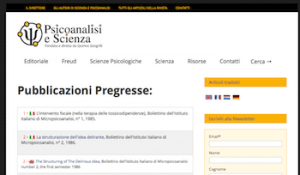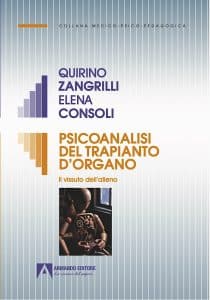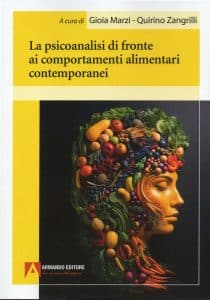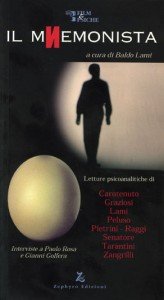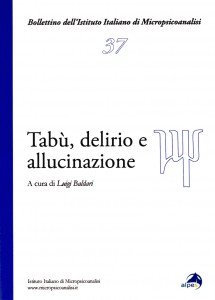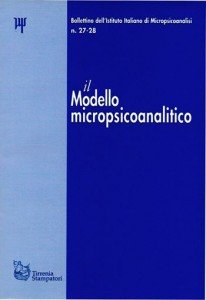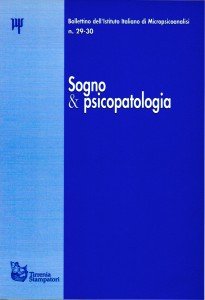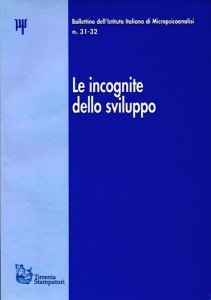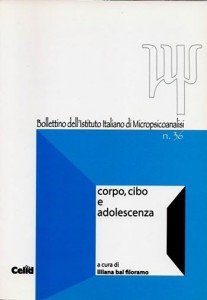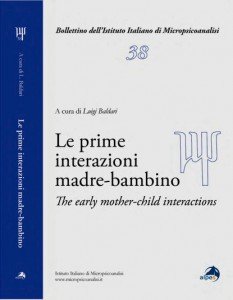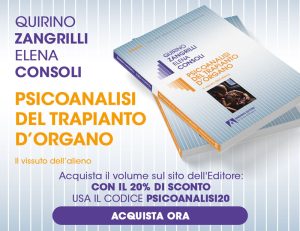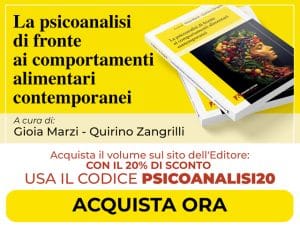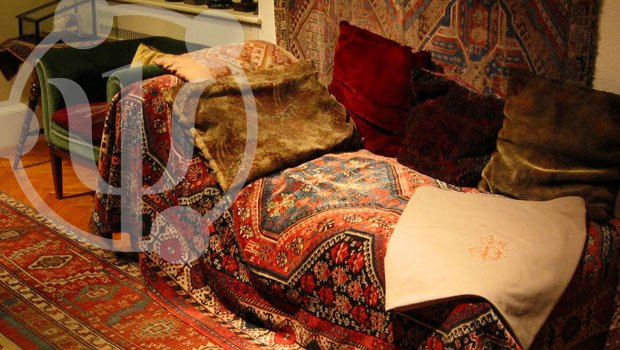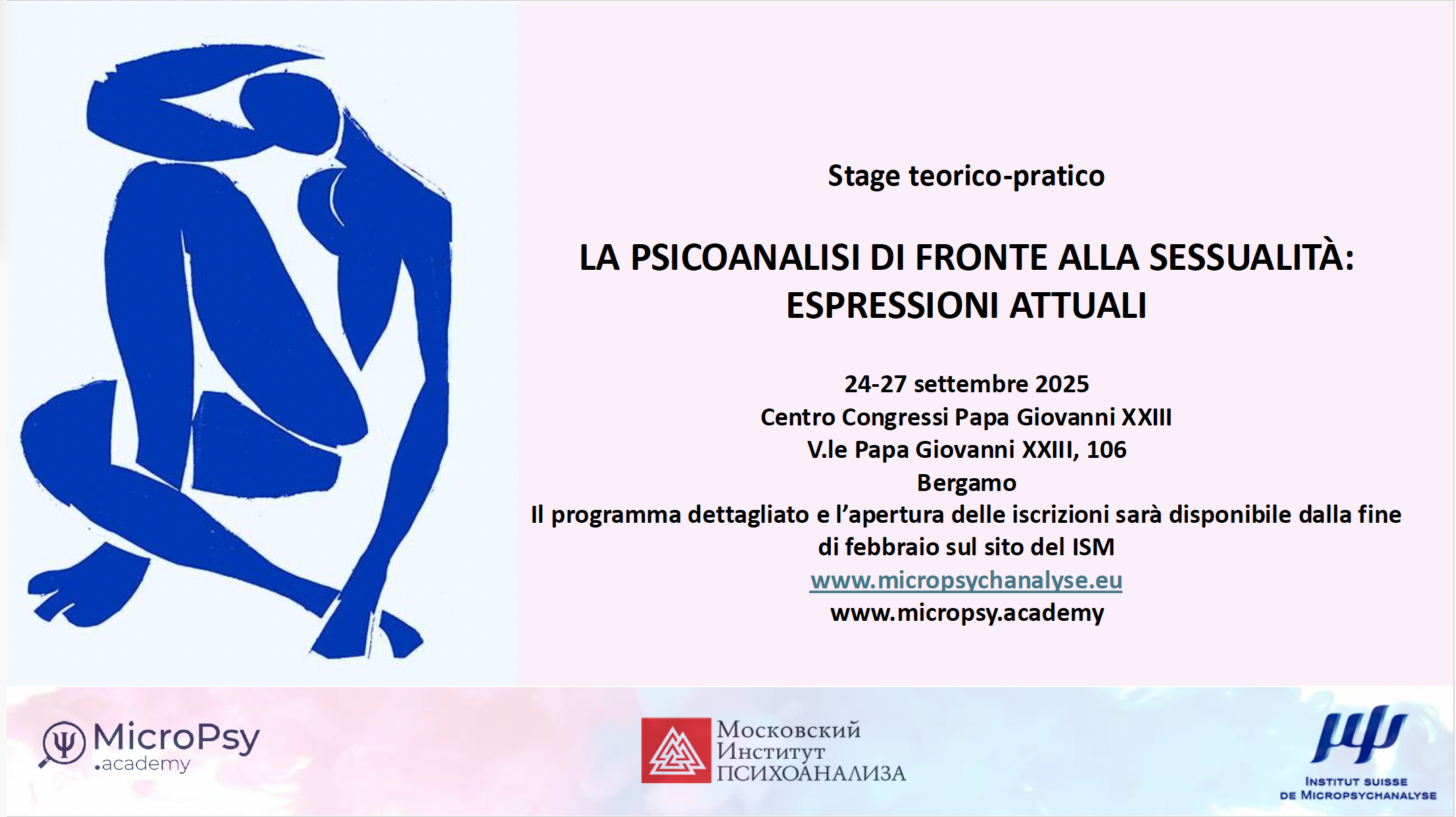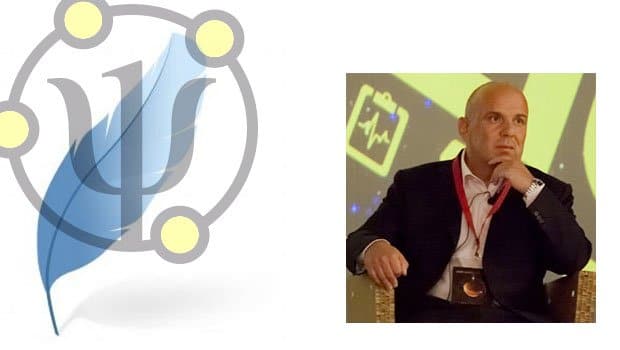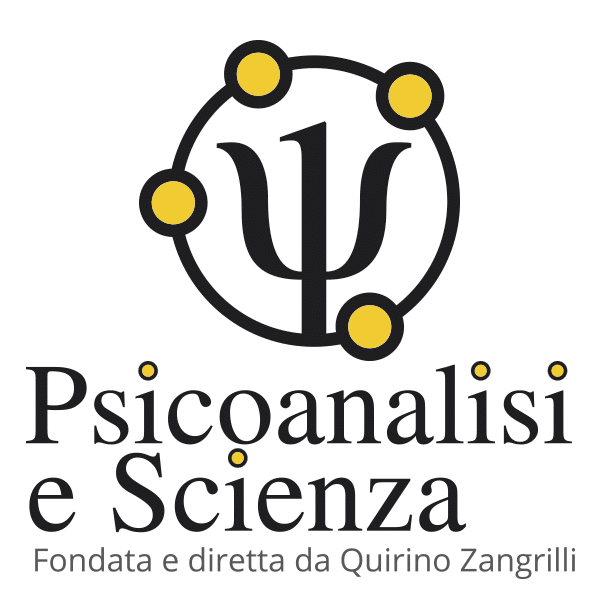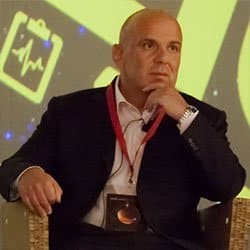
Questo è modestamente anche il mio auspicio ed è per questa ragione che ho fondato “Psicoanalisi e Scienza“, la rivista on line di psicoanalisi in lingua italiana meglio indicizzata nel mondo. 2
Pratico la psicoanalisi freudiana da oltre trentacinque anni con una modalità intensiva. In tale situazione la persona in analisi instaura con il proprio psichismo più profondo un rapporto contemporaneamente più intenso e meno ansiogeno.
L’elaborazione avviene in massima parte durante le sedute lunghe e quindi le reazioni terapeutiche negative sono pressoché impossibili.
I meccanismi di ripetizione, che sotto forme differenti continuano a ripresentarsi attraverso le generazioni, trovano nella risonanza ondulatoria delle sedute lunghe, la possibilità di scomporsi nei loro elementi costitutivi, fino a formare degli agglomerati che toccano tutti gli stadi dello sviluppo della libido e le fissazioni corrispondenti, comprese le difese. Ho dedicato a questo aspetto, cioè all’interazione filo-ontogenetica dello psichismo umano il volume “La vita: involucro vuoto” in adozione dal 1993 presso la Cattedra di psicologia dinamica dell’università di Torino.
Reputo le metapsicologie che hanno tentato di sostiuirsi a quella freudiana inutili scogli di fraintendimento che, anziché contribuire ad uno sviluppo collettivo della scienza di Freud, concorrono ad una parcellizzazione e ghettizzazione sterile delle risorse umane che si dedicano con entusiasmo allo sviluppo ed alla verifica scientifica delle teorie psicoanalitiche.
La psicoanalisi è propriamente, come l’etimologia ci suggerisce, una scomposizione dei contenuti psichici: un po’ come il chimico scompone le sostanze nelle loro componenti di base utilizzando varie metodiche, così lo psicoanalista analizza, cioè scompone, i pensieri e le emozioni dei suoi pazienti. La psicoanalisi intensiva si prefigge lo stesso scopo, proponendosi l’obbiettivo di giungere ad una dimensione d’indagine cosiddetta “microscopica”.
In altre scienze l’utilizzo di strumenti di amplificazione dei dati osservabili ha consentito il sorgere di nuove discipline: il microscopio elettronico ha permesso il passaggio dalla biologia alla microbiologia, gli acceleratori lineari il passaggio dalla fisica alla microfisica. Lo scopo principale di una psicoanalisi condotta in modo intensivo è quello di studiare il dettaglio psichico e psicomateriale nelle sue due componenti, quella energetica (l’affetto) e quella formale (le rappresentazioni mentali).
L’equivalente del microscopio del microbiologo è per lo psicoanalista che pratica la psicoanalisi intensiva l’allungamento del tempo di seduta, e dall’incremento della frequenza delle sedute stesse.
La dilatazione dell’osservazione che così si consegue, permette lo studio di un dato psichico inconscio particolarmente profondo. Ciò è reso possibile dal fatto che le resistenze che si oppongono all’emergenza dei contenuti rimossi, essendo di natura energetica, hanno, come tutti i fenomeni energetici esistenti in natura, un tempo di decadimento: estendendo il tempo di osservazione, sia le resistenze egoiche che quelle inconsce si indeboliscono permettendo l’emergere di rappresentazioni ed affetti, prima relegati nel processo primario dell’inconscio, al piano della coscienza, dove possono essere finalmente neutralizzati ed integrati nell’io.
Lo psicoterapeuta, a qualsiasi scuola appartenga, affronta il disagio della ricerca di dati indiretti. Un disagio che non è certo appannaggio solo della nostra categoria, ma che condividiamo con altri scienziati di discipline spesso ritenute, a torto, più probanti della psicoanalisi: mi riferisco, tanto per fare un solo esempio, ai microfisici.
Gli scienziati che si occupano di microfisica, quando si trovano in presenza di situazioni o meccanismi di cui è impossibile analizzare il dettaglio (ed in microfisica per l’esistenza del principio di indeterminazione di Werner Heisemberg, queste sono la maggior parte), cercano di specificare nel modo più netto possibile le parti del fenomeno che si possono osservare (ad esempio le perturbazioni indirette prodotte nel campo da una collisione di particelle). In altre parole dedicano la loro attenzione alla verifica del dato osservabile.
Lo psicoanalista si comporta in modo simile al microfisico: la persistenza del dato osservabile e la sua verifica per vie diverse, ne garantiscono l’oggettività e rende possibile la costruzione di uno schema di spiegazione semplice nel quale si cerca di neutralizzare le incognite, sostituendole con elementi di verifica che costantemente si ripresentano, espressi attraverso l’uso delle varie modalità tecniche.
Il fatto è che, come tutti coloro che praticano una psicoterapia profonda sanno, cause specifiche, uniche, dei fenomeni non esistono. Ciò che si verifica è il concorso di cause che interagiscono, si potenziano o si indeboliscono a vicenda. Esistono tuttavia dei dati osservabili che persistono, sia dal punto di vista energetico, che formale, retti dalla coazione a ripetere sia nell’ontogenesi, che lungo le linee generazionali.
Studiando il dato storico nelle sue molteplici forme attraverso l’ausilio dei supporti tecnici, l’analizzato e lo psicoanalista pervengono a riconoscere le trasformazioni della ripetizione così come si sono concretizzate e sono state registrate in documenti che possono appartenere a più generazioni. Si studiano così, sia rispetto all’individuo che ad una o diverse linee generazionali, i momenti di rafforzamento o diluizione della ripetizione, e l’inserimento, per opera del caso, di nuovi tentativi. Lo studio reiterato del dato ripetitivo, retto dal trauma e dalla fissazione, ne produrrà un indebolimento progressivo, fino a che sarà possibile che si rafforzino dei tentativi inediti che possano marciare verso una composizione del conflitto.
Uno studio di memorie dunque. D’altra parte Freud edificò la psicoanalisi studiando l’isteria ed affermando che questi malati soffrissero di reminiscenze: frammenti di memorie, strutturatesi in epoche remote, scritte con codici anacronistici, che si riattivano e cercano di assoggettare l’agire della persona.
Lors de sa contribution en 1999, déjà entré dans les annales de la science psychologique, le Prix Nobel pour la médecine, Eric R. Kandel soulignait à quel point la psychanalyse, bien que « représentant encore la vision de l’esprit plus cohérente et satisfaisante d’un point de vue intellectuel » n’avait pas encore développé suffisamment de méthodes objectives dans le but de démontrer les excellentes idées formulées par celui qui l’a découverte Sigmund Freud. Kandel souhaitait que la psychanalyse puisse développer une relation plus étroite avec la biologie en général et les neurosciences cognitives en particulier 1/.
C’est également mon humble désir et c’est pour cette raison que j’ai fondé « Psychanalyse et Science» la revue « on line » des psychanalystes de langue italienne et ajouterai-je la mieux indexée au monde 2/.
Je pratique la psychanalyse freudienne depuis plus de 35 ans d’une manière intensive. De ce fait, la personne en analyse instaure avec son propre psychisme un rapport à la fois plus profond et plus intense et moins angoissant.
L’élaboration advient dans la plus grande partie durant les longues séances et donc les réactions thérapeutiques négatives sont pratiquement impossibles.
Les mécanismes de répétition, qui sous différentes formes continuent à se représenter à travers les générations trouvent dans la résonance ondulatoire des longues séances, la possibilité de s’altérer dans leur éléments constitutifs jusqu’à former des agglomérés qui touchent tous les stades du développement de la libido et les fixations correspondantes y compris les défenses. J’ai dédié à cet aspect, c’est-à-dire à l’interaction phylo-ontogénétique du psychisme humain le volume « La vie : enveloppe vide » adopté en 1993 par la Chaire de Psychologie dynamique de l’Université de Turin.
Je considère les métapsychologies qui ont tenté de se substituer à celle freudienne inutiles écueils de malentendus qui au contraire contribuent à un développement collectif de la science de Freud, concourent à une parcellisation et ghettoïsation stérile des ressources humaines qui se consacrent avec enthousiasme au développement et à la vérification scientifique des théories psychanalytiques.
La psychanalyse est justement, comme l’étymologie le suggère, une décomposition des contenus psychiques : un peu comme le chimiste décompose les substances dans leur compositions de base, utilisant diverses méthodes, le psychanalyste analyse, c’est-à-dire décompose les pensées et les émotions de ses patients. La psychanalyse intensive se fixe le même but, tout en se proposant de l’atteindre selon une dimension d’enquête qui porte le nom de « microscopique ».
Dans d’autres sciences, l’utilisation d’instruments d’amplification des données observées a favorisé l’apparition de nouvelles disciplines : le microscope électronique a permis le passage de la biologie à la microbiologie, les accélérateurs linéaires le passage de la physique à la microphysique. Le but principal d’une psychanalyse conduite de manière intensive est celui d’étudier le détail psychique et psychomatériel dans ses deux formes, celle énergétique (l’affect) et celle formelle (les représentations mentales).
La dilatation de l’observation qui s’effectue avec l’allongement du temps de séance et de l’augmentation de la fréquence des séances elles-mêmes, permet l’étude d’une donnée psychique inconsciente particulièrement profonde. C’est-à-dire elle est possible du fait que les résistances qui s’opposent à la libération des contenus refoulés, qui étant de nature énergétique ont, comme tous les phénomènes énergétiques existants en nature, un temps de déchéance ; allongeant le temps d’observation, que ce soit les résistances égoïques que celles inconscientes s’affaiblissent favorisant l’apparition de représentations et d’affects qui étaient auparavant relégués dans le processus primaire de l’inconscient, au niveau de la conscience, où ils peuvent être finalement neutralisés et intégrés au Moi.
Le psychothérapeute appartenant à quelque école que ce soit, affronte le malaise de la recherche de données indirectes. Un malaise qui n’est certes pas seulement l’apanage de notre catégorie, mais que nous partageons avec d’autres savants d’autres disciplines souvent retenues à tort, plus probantes de la psychanalyse je me réfère, ne serait ce que dans le but de fournir un exemple aux microphysiciens.
Les savants qui s’occupent de microphysique, lorsqu’ils se trouvent en présence de situations ou de mécanismes pour lesquels il n’est pas possible d’analyser le détail (et en microphysique en ce qui concerne l’existence du principe d’indétermination de Werner Heisemberg, ces situations représentent la plus grande partie), essaient de fournir de la manière la plus nette possible les parties du phénomène que l’on peut observer (par exemple les perturbations indirectes produites dans le domaine d’une collision de particules). En d’autres mots, ils portent toute leur attention sur la vérification des données observables.
Le psychanalyste se comporte de manière semblable au microphysique : la persistance de la donnée observable et sa vérification par des voies diverses en garantissent l’objectivité et rend possible la construction d’un schéma d’explication simples dans lequel l’on cherche à neutraliser les énigmes, les substituant avec des éléments de vérification qui constamment se représentent s’exprimant à travers l’utilisation des diverses modalités techniques.
Le fait est que, comme tous ceux qui pratiquent une psychothérapie profonde le savent, des causes spécifiques, des phénomènes, il n’en existe pas. Ce qui se vérifie est le concours de causes qui interagissent, s’affirment ou s’affaiblissent réciproquement. Il existe de toutes les manières des données observables qui persistent, que ce soit ou d’un point de vue énergétique ou formel, soutenues par la coaction de répétition que ce soit dans l’ontogénèse ou au long des lignées générationnelles.
Etudiant la donnée historique dans ses multiples formes à travers l’aide des supports techniques, l’analysé et le psychanalyste parviennent à reconnaître les transformations de la répétition, de la manière avec laquelle elles ont été concrétisées et qui ont été enregistrées dans des documents qui peuvent appartenir à plusieurs générations. Il est possible d’étudier ainsi, eu égard tant à l’individu qu’à une ou diverses lignées générationnelles, les moments de renforcement ou de dilution de la répétition et l’insertion, casuellement, de nouvelles tentatives. L’étude réitérée de la donnée répétitive soutenue par le trauma et par la fixation, produira un affaiblissement progressif jusqu’à ce qu’il soit possible que des tentatives inédites qui peuvent aller vers une composition du conflit se renforcent.
Une étude de mémoire donc. D’autre part, Freud édifia la psychanalyse étudiant l’hystérie et affirmant que ces malades souffraient de réminiscences : fragments de mémoire qui se sont structurés dans des époques lointaines écrits avec des codes anachroniques qui se réactivent et cherchent à assujettir la conduite de la personne
In a contribution from 1999 which had already entered the history of psychological science, the Nobel prize winner for medicine Eric R. Kandel underlined how psychoanalysis even though “… still the most coherent and intellectually satisfying view of the mind” had not sufficiently developed objective methods to demonstrate the excellent ideas formulated by its discoverer Sigmund Freud.
Kandel hoped that psychoanalysis could develop a stronger connection to biology in general and to cognitive neurosciences in particular. 1
Modestly this is also my wish and it is for this reason that I founded “Psicoanalisi e Scienza“, the online Review of psychoanalysis in italian (translated in several languages) which is the most indexed in the world. 2
I have been practising the freudian psychoanalysis with an intense modality. In such a situation the patient establishes a relationship with his own deepest psychism, which is contemporaneously more intense and less worrisome. The elaboration happens mainly during the long sessions and so the negative therapeutic reactions are almost impossible.
The mechanisms of repetition, which continue to present themselves again under different forms through the generations, find in the undulatory resonance of the long sessions, the possibility of breaking themselves up in their constitutive elements, until forming agglomerates that touch all the stages of the libido development and the corresponding fixations, including the defences.
I have dedicated to this aspect, in other terms to the phylo-ontogenetic interaction of the human psychism, the volume “The Life: an Empty Involucre” in use by the Chair of Dynamic Psychology at Turin’s University since 1993.
I consider the metapsychologies, which have attempted to substitute themselves with the freudian one, useless stumbling blocks of misunderstanding which, instead of contributing to the collective development of Freud’s Science, combine to bring about a fractionalisation and a sterile ghettoisation of the human resources that dedicate themselves with enthusiasm to the development and the scientific proof of the psychoanalytic theories.
Psychoanalysis is exactly, as the etymology suggests, a breakdown of the psychic contents: a little like the chemist breaks down the substances into their basic components using various methods, in the same way the psychoanalyst analyses, in other words breaks down, the thoughts and emotions of his patients.
Intensive Psychoanalysis intends the same goal, committing to the objective of reaching a dimension of study that is so-called “microscopic”.
In other sciences the use of tools of amplification of the observable data has permitted the emergence of new disciplines: the electron microscope has allowed the passage from biology to microbiology and the linear particle accelerators have allowed the passage from physics to microphysics. The main aim of a psychoanalysis practiced in an intensive manner is that of studying the psychic and the psychic-material detail in its two components, the energetic one (affect) and the formal one (mental representations).
The microscope for the microbiologist is the equivalent of the lengthening of the session time for the psychoanalyst that practices intensive psychoanalysis and the increasing of the frequency of the sessions.
The dilatation of the observation that is obtained in this way permits the study of an unconscious psychic data which is particularly deep. This is made possible by the fact that the resistances which contrast the emergence of the removed contents, being of an energetic nature, have as all the energetic phenomena existing in nature, a decaying time: extending the observation time both the Ego resistances and the unconscious ones become weaker permitting the emergence of the representations and affects, first relegated in the primary process of the Unconscious to the conscious level where they can finally be neutralised and integrated within the Ego.
The psychotherapist, whichever School he belongs to, faces the disadvantage of the research of indirect data. A disadvantage which does not belong only to our category but which we share with other scientists of disciplines, often wrongly regarded as more convincing than psychoanalysis: I refer, just to give one example, to micro-physicists.
When scientists who deal with microphysics find themselves in the presence of situations or mechanisms which are impossible to analyse in detail (and in microphysics because of Werner Heisenberg’s Uncertainty Principle these are the majority) they try to specify in the clearest possible way the parts of the phenomenon which can be observed (for example the indirect perturbations produced in the quantum field by a collision of particles). In other words they dedicate their attention to the proof of the observable data.
The Psychoanalyst behaves in a similar way to the micro-physicist: the persistence of the observable data and its proof through different means guarantee its objectivity and make the construction of a simple explanation scheme possible in which one tries to neutralise the unknown substituting it with elements of proof which represent themselves again constantly, expressed through the use of various technical modalities.
The fact is that, as all those who practice a deep psychotherapy know, unique specific causes of the phenomena do not exist. What happens is the combination of causes which interact, potentialising or weakening each other.
Observable data which persists still exists either from an energetic point of view or a formal one maintained by the compulsion to repeat in both the ontogenesis and through the generational branches.
Studying the historical data in its various forms through the aid of technical supports, the patient and the psychoanalyst get to recognise the transformations of repetition in the way they actualised themselves and were recorded in documents which can belong to several generations.
Therefore, the moments of strengthening or dilution of the repetition and the insertion of new attempts, by the hands of chance, are studied both in respect to the individuals and one or more generational branches.
The reiterated study of the repetitive data, generated by trauma and fixation will produce its progressive weakening until it is possible that unknown attempts are strengthened, a fact which could determine a composition of the conflict.
Therefore a study of memories. On the other hand Freud built psychoanalysis studying hysteria and affirming that these patients suffered from reminiscences: fragments of memories, which were structured in remote eras, written with anachronistic codes which are reactivated and which try to subject the behaviour of a person.
1 Eric R. Kandel, Biology and the future of psychoanalysis: a new intellectual framework for psychiatry revisited. American Journal of Psychiatry, 1999 Apr.
2 (Fonte: Alexa, Google, Virgilio, Arianna., etc.). “Psicoanalisi e Scienza“, fondata e diretta da Quirino Zangrilli, conta oltre un milione e ottocentomila contatti mensili e supera le 69.000 visite al mese (fonte: webalizer).
Vai al curriculum esteso
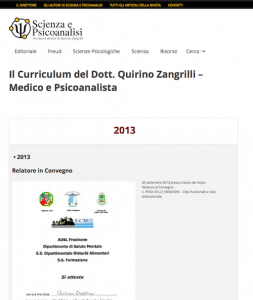
• Consegue la Laurea in Medicina e Chirurgia presso l’Università “La Sapienza” di Roma nell’anno 1980 con il punteggio di voti centodieci e lode (110/110 e lode) discutendo la tesi assegnata dalla Seconda Clinica Psichiatrica dal titolo “Funzione psicosomatica del movimento ritmico nella danza”.
• Porta a termine in Svizzera (Couvet) negli anni 1980-82 la sua formazione specialistica sotto la supervisione del Prof. Nicola Peluffo, docente di Psicologia Dinamica presso l’Università di Torino.
• Inizia l’attività clinica psicoterapeutica nel 1982.
• Svolge negli anni accademici 83-84, 84-85, 85-86, 86-87, attività di ricerca scientifica nei corsi di Psicologia sociale e Psicologia dinamica dell’Università di Torino.
• E’ autore di 73, tra libri e pubblicazioni, nel campo specifico della Psicopatologia, molte delle quali costituivano comunicazioni ufficiali a Congressi Internazionali.
• Nel 1993 pubblica presso l’Editore “Borla” di Roma il volume “La vita: involucro vuoto” che viene adottato presso la cattedra di Psicologia Dinamica del Corso di Laurea in Psicologia dell’Università di Torino.
• Nel marzo 1994 gli viene conferito il “Premio Nazionale Ciociaria 1994 per la Medicina” per le ricerche svolte nel campo della Psicopatologia.
• E’ il Direttore editoriale di “Scienza e Psicoanalisi“, la rivista on line di psicoanalisi, in lingua italiana, meglio indicizzata nel mondo (Fonte: Alexa, Google, Virgilio,Arianna., etc.)
• Nel 2012 partecipa come Relatore alla Rassegna Scientifica di BergamoScienza.
• Nel 2013 espone i suoi studi sull’nterazione materno-fetale nella Sessione Speciale dell’ XI Congresso Mondiale di Medicina Perinatale con la relazione “Intrauterine Imprinting”
• E’ docente presso il Corso Triennale di Specializzazione in Psicoanalisi, Psicoterapia psicoanalitica e Consulenza psicoanalitica dell’Università di Mosca
• Nel 2024 riceve il Premio Accademico d’Onore della Accademia Culturale Internazionale Cartagine 2.0.
• Nel 2025 pubblica come curatore il libro “LA PSICOANALISI DI FRONTE AI COMPORTAMENTI ALIMENTARI CONTEMPORANEI” presso Armando Editore
• Nel 2025 pubblica il libro “PSICOANALISI DEL TRAPIANTO D’ORGANO – IL VISSUTO DELL’ALIENO” presso Armando Editore
Doctor Quirino Zangrilli was born in Fiuggi in 1955.
Graduated with honours in Medicine and Surgery in 1980, he practices Psychoanalysis, with intensive method, since 1982.
He is author of 72 scientific pubblications.
He has attended as speaker or president of session to many national and international scientific Conventions.
His book “La vita:involucro vuoto” (Life: empty involucre), published by Borla in 1993, has been in use by the Chair of Dynamic Psychology at Turin’s University since 1994.
He is the author and founder of the multimedia review “Psicoanalisi e Scienza” (Psychoanalysis and Science), the most read Italian on line review of psychoanalysis.
In 2012 he participated as a Speaker at the Scientific Festival of BergamoScienza. In 2013 he illustrated his research on the maternal-fetal interaction in the Special Session of the XI World Congress of Perinatal Medicine in Moscow with his relation “Intrauterine Imprinting”.
He is visiting teacher at Moscow Institute of psychoanalysis and training psychoanalist of Swiss Institute of Micropsychoanalysis.
In 2024 he received the Honorary Academic Award of the Carthage 2.0 International Cultural Academy.
In 2025 he published as an editor the book “PSYCHOANALYSIS IN THE FACE OF CONTEMPORARY EATING BEHAVIOURS” at Armando Editore
In 2025 he published the book “PSYCHOANALYSIS OF ORGAN TRANSPLANTATION – THE EXPERIENCE OF THE ALIEN” at Armando Editore
Le Le Docteur Quirino Zangrilli est né à Fiuggi en 1955.
Diplômé avec mention en Médecine et Chirurgie en 1980, il pratique la psychanalyse depuis 1982, en utilisant une technique intensive.
Il est l’auteur de 72 livres et publications scientifiques.
Il a participé en tant que conférencier ou président de session à de nombreuses conférences scientifiques nationales et internationales.
Son livre “La vie : enveloppe vide”, publié par Borla en 1993, est adopté depuis 1994 par la Chaire de Psychologie Dynamique de l’Université de Turin.
En 1994, il a reçu le “Prix national Ciociaria de médecine”. Il a conçu et fondé le magazine multimédia “Psicoanalisi e Scienza”, qui est le magazine de psychanalyse en ligne en italien le plus suivi au monde. (Source : Entireweb, Alexa, Google, Virgilio, Arianna., etc.).
En 2012, il a participé en tant que conférencier à la colloque scientifique de BergamoScienza.
En 2013, il a exposé ses études sur l’interaction materno-fœtale lors de la session spéciale du XIe Congrès mondial de médecine périnatale à Moscou avec le rapport “Intrauterine Imprinting”.
Il est chargé d’enseignement au cours de spécialisation de trois ans en psychanalyse, psychothérapie psychanalytique et consultation psychanalytique à l’Université de Moscou.
Il est membre didacticien de l’Institut Suisse de Micropsychanalyse et de la Commission pour la Pratique de celui-ci.
En 2024, il reçoit le Prix Académique Honoraire de l’Académie Culturelle Internationale Carthage 2.0.
En 2025, il publie en tant qu’éditeur le livre « LA PSYCHANALYSE FACE AUX COMPORTEMENTS ALIMENTAIRES CONTEMPORAINS » chez Armando Editore
En 2025, il publie le livre « PSYCHANALYSE DE LA TRANSPLANTATION D’ORGANES – L’EXPÉRIENCE DE L’ÉTRANGER » avec Armando Editore
![]()
В 2025 году он опубликовал в качестве редактора книгу «ПСИХОАНАЛИЗ В РАМКАХ СОВРЕМЕННОГО ПИЩЕВОГО ПОВЕДЕНИЯ» в издательстве Armando Editore
В 2025 году он опубликовал книгу «ПСИХОАНАЛИЗ ТРАНСПЛАНТАЦИИ ОРГАНОВ – ОПЫТ ЧУЖОГО» совместно с Армандо Эдиторе
PSICOANALISI DEL TRAPIANTO D’ORGANO di Quirino Zangrilli ed Elena Consoli | Armando Editore | 2025
a cura di Gioia Marzi e Quirino Zangrilli • La psicoanalisi di fronte ai comportamenti alimentari contemporanei
Quirino Zangrilli • Le conseguenze psicopatologiche della violenza assistita
La Vita: involucro vuoto – Borla – Roma 1993
Quirino Zangrilli • Il Signor Serasevskij e la psicoanalisi.
Quirino Zangrilli • Delirio, sogno, allucinazione: “La gradiva” di Jensen rivissuta in un caso clinico
Quirino Zangrilli • La psicosomatica
Quirino Zangrilli • Sogno e telepatia
Quirino Zangrilli • Io-fittizio e Io-delirio nella genesi del disturbo psicotico
Quirino Zangrilli • Il figliol prodigo
Quirino Zangrilli • Imprinting intrauterino e destino psicobiologico
Visualizzazione ingrandita della mappa
Via Prenestina Antica, 18 03014 • Fiuggi (FR)
Cell. +39 328 9146366
Indicazioni stradali per raggiungere lo studio.
mail: [email protected]



